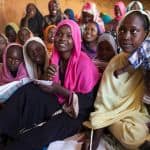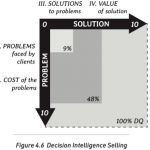Doing Good by Doing Business: How B1G1’s Innovative Giving Model Is Mobilizing Small and Medium-Sized Enterprises to Make a Social Impact
B1G1 (Buy1Give1) is a global business giving initiative that makes it easy for enterprises – particularly small and medium-sized enterprises (SMEs) – to support charitable causes around the world. Founded in Australia in 2007 and now headquartered in Singapore, B1G1 works with almost 3,000 companies, providing an online platform that enables them to leverage their everyday business activities to support over 500 giving projects from 30+ countries. B1G1 (a certified B Corp) connects these businesses to over 500 carefully selected high-impact giving projects, creating over 200 million giving impacts to date.
NextBillion spoke with founder and CEO Masami Sato to discuss how B1G1 developed its innovative model, how its approach differs from the model popularized by companies like TOMS Shoes, and why it’s important to mobilize the power of SMEs to build upon the impact of traditional charitable giving.
James Militzer: What does B1G1 do, and how does it differ from conventional giving models?
Masami Sato: B1G1 is a giving initiative designed specifically to help small and medium-sized businesses integrate very powerful and effective giving in what they do.

Masami Sato
It’s vastly different than “conventional” giving, which tends to revolve around a company supporting a specific charity. B1G1 turns that on its head by being focused on transforming the business too, by embedding the giving deeply into the business processes.
For example, imagine a coffee shop that gives access to life-saving water for every coffee they sell, or an accounting firm that helps plant trees for every client they create, or a typical business making sure that children in need get educated every time they send an email.
With B1G1, businesses of any size and type can create their own unique “Giving Stories” which in turn create measurable global impacts just by doing what they normally do. And as a result, businesses working with B1G1 have already created more than 200 million giving impacts together.
Individually, these business activities are small, yet when so many businesses come together and create a habit of giving, we truly can transform many of the problems we have in the world. And at the same time, we can shift the very spirit of what it means to be in business. That’s why B1G1 businesses really are “businesses for good,” and a real force for good in our world.
JM: Talk about how you came up with the Buy1Give1 model: What gave you the idea, how did you implement that approach through your own business initially, and what kind of early response did you get from customers?
MS: The idea of B1G1 was initially conceived when I was running my earlier business.
I became an entrepreneur 20 years ago because I wanted to do something meaningful in my life. The first business I started was a food business, because I was passionate about food. I wanted to make sure every family – no matter how busy they were – could enjoy having nourishing meals with their loved ones, and so I became a producer of organic frozen meals. We planned to donate the profits the business would make to help feed and educate vulnerable children in the world.
Despite the strong desire to make a difference, I also realized that it was not easy for a small business like ours to do much on a regular basis. After five years of hard work and growing our distribution, we were not really doing much giving at all.
One day, I had a simple thought: “What if we just gave one meal to a child for every meal we sold?” That simple thought transformed the way we did what we did. Giving and making a difference became a part of what we did every day – instead of something that we wished to do one day.
After that, I also realized that it was not just my company that wanted to make a difference — other businesses did too. But there was no model that allowed them to do it easily. So, several months later, I sold the food business and moved to Singapore to start B1G1 as a global giving initiative to help many other businesses to implement this ideology.
JM: I understand you came up with the buy one, give one model around the same time as Blake Mycoskie was experimenting with a similar approach with TOMS Shoes (though you weren’t aware of his company yet). Did your initial approach differ from the TOMS Shoes model? If so, how?
MS: We actually never knew about TOMS until many years later. And the B1G1 model has never been about businesses giving the same thing they sold (like TOMS, where it’s “buy a shoe, give a shoe”).
We work with any existing businesses with a desire to give, and we simply introduce them to high-impact, vetted projects to make important impacts in the world.
We also work with so many different businesses – many of which are B2B businesses that may not even have specific products, and that might be service businesses or health care professionals, and so on.
Our model encourages all businesses to integrate giving into the very core of their activities. For example, a business can choose to plant a tree or help provide quality education to children in need for every meeting they have or every project they complete. Giving in B1G1 doesn’t even have to tie with financial activities.
Imagine a world where every business of every type celebrates its wins by making a positive impact in the world. Now, every problem in the world can be solved by the collective efforts of these businesses.
JM: TOMS Shoes decided to move away from their original model last year, giving one third of net profits toward charitable causes, instead of giving away one pair of shoes for every pair sold. How has your approach changed over time? What are the disadvantages of your and TOMS Shoes’ previous approach, and the advantages of your current model?
MS: Our model has been pretty much the same from the beginning. We set out to create three things in the world of business giving.
The first thing is IMPACT. We work to make sure that every giving can have a tangible impact. The second thing is HABIT. We believe that businesses can transform our world if they transform their habit and make giving an integral part of what they do. And the third element is CONNECTION. We work on helping businesses create a deep sense of connection through their giving activities. One business alone cannot change the world, but together they can.
While these core beliefs haven’t changed over the last 14 years, we have gradually transformed the way we manage things in the background – from the selection of projects to the criteria we set for charity organizations to join this initative. We have learned how different organizations worked in the world to tackle various issues, often through extremely innovative approaches.
I’m sure the people at TOMS have learned many things through their work too. And it’s great that they have moved to a new model – to make sure their impacts are sustainable and in synergy with what people around the world really need.
At B1G1 too, our work is ongoing and our learning continuous. We look forward to many new learnings and collaborating with many other organizations to tackle many more important challenges.
JM: Why is it important to embed giving into businesses’ daily operations – and what is the value of focusing on the stories behind this giving?
MS: In the world of business giving, large corporations are already doing quite a lot of work. Many of these large companies have their own CSR departments or foundations. But more than 90% of businesses in the world are actually small and medium-sized enterprises. The amount of money businesses give for philanthropy is still very small compared to what individuals and foundations are contributing today (business giving accounts for less than 5% of overall giving in many countries). This alone is a huge opportunity.
In addition to it, there is an opportunity to change the way charitable donations are raised and used. In fact, charitable giving has been here for hundreds of years. Yet raising enough funds for charitable activities has never been straightforward.
There are occasions that trigger a large amount of ad-hoc giving, such as seasonal giving (e.g.: Christmas), large campaigns (e.g.: the Ice Bucket Challenge), or natural disasters. But these ad-hoc giving activities haven’t been enough to really transform our world. Charity organizations around the world still spend a large percentage of their funds on fundraising. And when they stop their fundraising efforts, they can quickly run out of funds to keep doing their work.
Businesses have existed for thousands of years in more sustainable ways. And they keep growing and influencing everyday lives and all economies, because businesses create direct value to every person and organization in the world. Businesses touch lives beyond borders and beyond our cultural, religious and racial differences.
Business activities happen every day not because someone decides to donate money one day, but because we need those business activities to enable us to live our lives. So, if impactful giving is integrated into those activities, we can transform our world without even thinking.
It’s like tiny honeybees pollinating flowers in the world – not only because they think of doing good, but also because that’s a natural part of who they are and what they do every day.
JM: B1G1 is run by a social enterprise (registered in Singapore) and a non-profit organization (registered in the U.S.) What’s the reasoning behind that dual for profit/non-profit structure, and the separate locations?
MS: From day one, we wanted to run B1G1 as a business. Businesses work to create meaningful value for their customers and as a result, create long-term sustainability and opportunity to keep growing without asking for donations.
B1G1 exists to add value to businesses. We help small and medium-sized businesses give effectively, create and measure their impacts, and engage their stakeholders in the impacts they create together.
Giving effectively can have many positive impacts on the business itself too. First, businesses with a genuine giving focus would more naturally attract great talent – people who want to work for companies that care. Second, more and more customers these days are choosing to do business with socially responsible businesses.
And because our initiative is funded by the membership model, we can make sure that 100% of the giving our members do can be forwarded to the projects they choose to support. By having another entity with a charity status to manage our Worthy Cause program, we ensure that there is maximum clarity and transparency with the way our members’ contributions are managed.
JM: How many businesses does B1G1 support, where are they located, and how can a business get involved?
MS: Today, we work with nearly 3,000 businesses that are located in more than 40 countries. Many of them are currently in English-speaking countries like the U.K., U.S., Australia and New Zealand, due to the fact that our website is in English. We do intend to grow and scale this initiative so that we can serve businesses in all other countries too.
If you are keen to join this giving movement, you can simply visit b1g1.com and create your B1G1 account. Any business can choose to be part of B1G1 and make giving a part of what they do.
JM: Do you have any advice for other female business owners (or aspiring business owners) starting their own entrepreneurial journey?
MS: I think more and more women should start their own businesses. By bringing more female perspectives and approaches in the business world, we can create a more sustainable world together working with leaders of all types.
James Militzer is the managing editor at NextBillion.
Photo courtesy of MegaPixl.
- Categories
- Social Enterprise



